A GUIDE TO BUYING GEMSTONES
Determine your budget: Gemstones can range in price from a few dollars to hundreds of thousands of dollars, so it's important to determine what you're willing to spend.
The quality and value of gemstones are evaluated according to the 4C’s include color, cut, clarity and carat. Additional factors that need to be considered are the durability of a gem and any treatments used Colored gemstones are also frequently treated, which also affects their value.
Gemstones Color:
Color is an important factor. However, don't assume that the darker the color, the better the stone. Color may be too dark. In general, the brighter and more vibrant the colors, the better. Clean, clear and mid tones are most preferred.
Gemstone colors can be divided into three categories:
- Hue
- Tone
- Saturation
Hue:
Hue refers to the color of a gemstone. Most often, gemstones have a primary color (red, blue, or yellow) and a secondary color that results from mixing the primary colors (orange, green, violet). The most valuable gemstones are pure colors, with only a slight tint of other gemstones.

Tone:
Tone describes the relative lightness or darkness of a gem's color. For example, pink gems are classified as "light pink" or "medium pink", and green gems are classified as light green to deep forest green.

Saturation:
Saturation is the intensity or purity of a color. A gem's color becomes less pure as it becomes less saturated, adding a gray or brown hue. Therefore, the most desirable gem varieties are those that exhibit strong saturation and consistent color throughout.

Clarity:
Gemstone clarity refers to the degree of transparency and absence of inclusions or blemishes in a gemstone. It is an important factor in determining the value of a gemstone.
In general, the clearer a gemstone is, the more valuable it is considered to be. Gemstones are rated on a clarity scale that ranges from "included" to "flawless." The most commonly used clarity scale is the Gemological Institute of America (GIA) clarity scale, which includes the following grades:
- Included (I1, I2, I3)
- Slightly Included (SI1, SI2)
- Very Slightly Included (VS1, VS2)
- Internally Flawless (IF)
- Flawless (FL)
Gemstones with a high degree of clarity, such as a "flawless" or "internally flawless" rating, are considered to be more valuable and rare. However, the value of a gemstone is not solely determined by its clarity, and other factors such as the color, cut, and carat weight are also important.

Cut:
A gemstone cut refers to the way a gemstone has been shaped and polished. The cut can impact the gemstone's appearance, brilliance, and overall value. There are many types of gemstone cuts, including round, princess, emerald, oval, radiant, pear, marquise, heart, and many others. The choice of cut depends on the gemstone's shape, size, and quality, as well as personal preference. A well-cut gemstone will enhance its natural beauty and maximize its brilliance and fire

Carat weight:
A carat is the unit of weight used to measure gems and diamonds. One carat is equal to 200 milligrams or 0.2 grams. The weight of a gemstone is a crucial factor in determining its value, as larger gemstones are generally rarer and therefore more valuable. However, the quality of the gemstone, including its color, clarity, and cut, also play a significant role in its overall value. When purchasing a gemstone, it's important to consider all of these factors, not just carat weight, to ensure you are getting a high-quality gemstone at a fair price.

Origin:
The origin of a gemstone refers to the geographic location where it was mined or extracted from the earth. The origin of a gemstone can impact its value, as some regions are known for producing gemstones of a certain quality or with unique characteristics. For example, diamonds from Russia are known for their exceptional clarity, while rubies from Myanmar (Burma) are highly valued for their rich, saturated color. Gemstones from certain countries may also have a higher demand due to cultural or historical associations, which can also impact their value. Knowing the origin of a gemstone can provide valuable information about its quality and history, and can help you make an informed purchase decision.
Treatment:
Gemstone treatment refers to the process of altering the natural state of a gemstone to improve its appearance or durability. Common treatments include heat treatment, irradiation, dyeing, filling, and coating. Some treatments are considered permanent, while others may require reapplication or special care. It's important for buyers to be informed about the treatment history of a gemstone, as it can affect its value and durability.
Summary:
- Quality: The quality of a gemstone is determined by its color, clarity, cut, and carat weight. Choose a gemstone that has a desirable color and good clarity, and a well-cut gemstone will enhance its natural beauty and maximize its brilliance and fire.
- Origin: The origin of a gemstone refers to the geographic location where it was mined or extracted from the earth. Knowing the origin of a gemstone can provide valuable information about its quality and history.
- Certification: Consider purchasing a gemstone that has been certified by a reputable gemological laboratory, such as the Gemological Institute of America (GIA). A certification can provide valuable information about a gemstone's authenticity, quality, and characteristics.
- Price: The price of a gemstone can vary greatly depending on its quality, rarity, and origin. Determine a budget and look for a gemstone that offers the best value for your money.
- Reputable seller: Buy from a reputable gemstone dealer or jeweler who can provide a warranty, return policy, and answers to any questions you may have.
By considering these factors, you can make an informed decision and purchase a gemstone that meets your needs and fits your budget.
Visit our Collection for colorful Gemstones: Loose Gemstone
- a guide to buying gemstone
- best place to buy gemstones online
- buy certified gemstones online
- full guide to buying gems
- gemstone certification guide
- gemstone clarity
- gemstone origin
- gemstone price
- gemstone property
- gemstone quality
- gemstone treatment
- guide to buying gemstone
- loose stone to buy
- where to buy real gemstones online
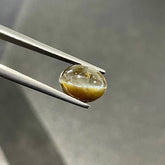
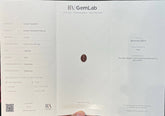
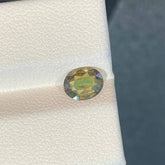
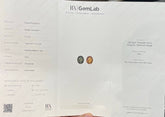

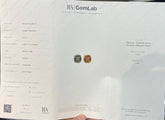
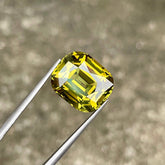
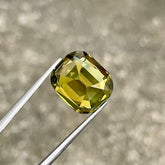

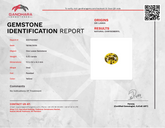
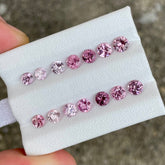

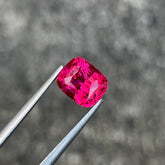



Leave a comment
Please note, comments need to be approved before they are published.